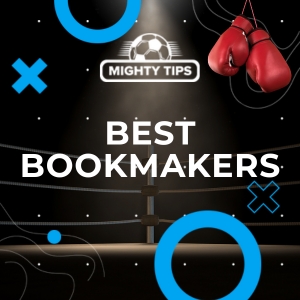Ireland’s long history, from ancient Celtic warriors to today’s tough spirit, has strongly influenced how its MMA fighters think and fight. Irish athletes are known around the world for their toughness and strong spirit. They build on a long history of culture and tradition, which helps make them powerful fighters in the cage. This cultural identity fosters a unique blend of discipline, pride and emotional intensity that often translates into fearless performance under pressure.
From the legendary warrior archetypes of Irish mythology to the historical resistance movements against colonial rule, the national narrative celebrates strength through adversity. This legacy continues in today’s gyms, where young fighters are taught not only technique but also mental toughness and community loyalty.
The Irish approach to MMA emphasizes personal grit, tactical intelligence and emotional resilience i.e. the qualities that align closely with the demands of the sport. As a result, Ireland has produced a disproportionate number of high-profile fighters relative to its population, reflecting the cultural depth behind its combat sports success. With this strong foundation, many fans enjoy placing bets on Irish fighters, confident in their ability to perform under pressure. MMA betting has grown in popularity across Ireland, adding excitement and national pride to each bout. The rise of online sportsbooks and mobile apps has made it easier than ever for fans to engage with the sport through betting. As MMA continues to grow, so does the betting market around it, attracting both seasoned punters and new fans alike.
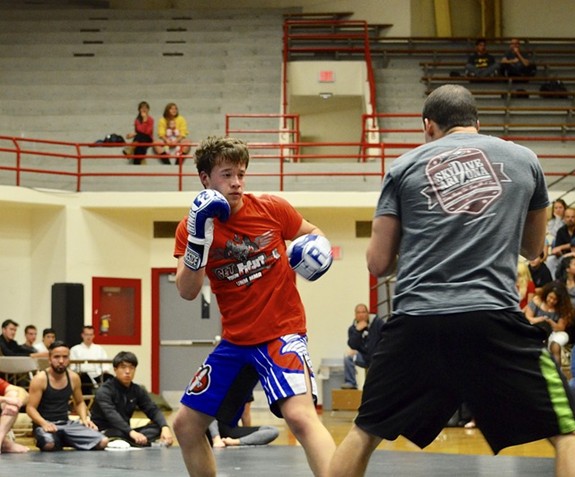
https://pixabay.com/photos/mma-mixed-martial-arts-fighter-1890458/
Irish Fighting Spirit
The idea of the “Irish Fighting Spirit” comes from stories of strength during hard times like the Great Famine and years of foreign rule. It’s an important part of Irish culture. These values like bravery, toughness and never giving up show clearly in MMA. Irish fighters train hard, stay strong under pressure and keep going even when things get tough. Coaches at Straight Blast Gym Ireland, including John Kavanagh, foster this cultural mindset, reinforcing tough training and collective mentality over ego.
This approach is evident in the way Irish fighters embrace high-pressure sparring sessions, simulate adversity in training camps and condition themselves for late-round stamina. For example, Conor McGregor’s comeback victory over Chad Mendes at UFC 189 showcased not just physical skill but also a refusal to wilt under fatigue and damage.
Similarly, Sinead Kavanagh’s performances in Bellator often highlight her grit and refusal to back down, even when facing technically superior opponents. Mental conditioning drills such as controlled breathing under duress and scenario-based sparring are standard practice at Irish MMA gyms, helping fighters build emotional resilience alongside physical endurance.
The Bigger Context
The rise of sports betting and online casinos in Ireland has paralleled the growing popularity of MMA, creating new ways for fans to engage with the sport. Betting platforms now offer live odds on Irish fighters, turning each match into an interactive experience. Many online casinos have embraced MMA themes, incorporating fight night promotions and exclusive bonuses tied to major events. This convergence of gambling and combat sports entertainment has helped drive traffic to both sectors, boosting overall fan engagement. For instance, review sites like Irish online casino list top casino operators that capitalize on the crossover appeal between online casinos and sports betting.
Some sportsbooks now feature in-depth fighter stats and pre-fight analytics, enhancing the betting experience for both casual fans and seasoned punters. Live in-play betting has also become a favorite option during major MMA events, allowing users to wager on evolving fight dynamics in real time. Additionally, casino streamers and influencers are beginning to collaborate with MMA personalities, creating crossover content that appeals to a broader digital audience. This fusion of content marketing, gambling and combat sports storytelling is helping to attract younger demographics and drive brand loyalty.
Additionally, MMA camps host sponsorship and broadcast deals, making these gyms both economic and athletic hubs. Promotions such as Cage Warriors and Bellator have hosted events in Dublin to tap into the passionate Irish fan base, generating ticket revenue, streaming subscriptions and local business activity. Fighters like Ian Machado Garry and Sinead Kavanagh have signed individual endorsement deals with apparel brands and nutrition companies, expanding the commercial footprint of Irish MMA beyond the cage. Irish online content creators and sports platforms have also grown in parallel, offering breakdowns, interviews and highlight reels that increase visibility and create monetization opportunities through advertising and partnerships. This synergy between digital engagement, sponsorship economics and cultural identity is helping transform Irish MMA into a sustainable sports business ecosystem.
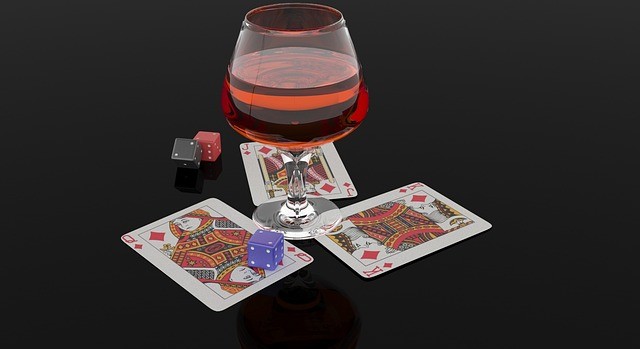
https://pixabay.com/photos/cards-dice-whiskey-casino-2080805/
From Bare-Knuckle to MMA
Historically, traditional Irish combat forms such as bare-knuckle boxing and collar and elbow wrestling laid the technical groundwork for modern MMA. These arts practiced close-range exchanges, grappling control and ground strategy, all of which echo today in MMA clinch work and takedown control. For example, collar and elbow’s emphasis on balance and leverage directly complements wrestling skills in the cage.
Many Irish fighters instinctively excel in dirty boxing and clinch battles, areas heavily influenced by bare knuckle traditions where timing and body positioning are critical. The collar and elbow style also teaches dynamic footwork and upper body control, which transitions well into mixed martial arts when integrated with jiu jitsu and Greco Roman throws. Training camps such as those at SBG Ireland incorporate these historical principles into modern drilling formats, focusing on pummeling, underhook control and inside fighting.
This cultural foundation provides Irish fighters with a natural affinity for transitional combat phases where striking blends into grappling seamlessly.
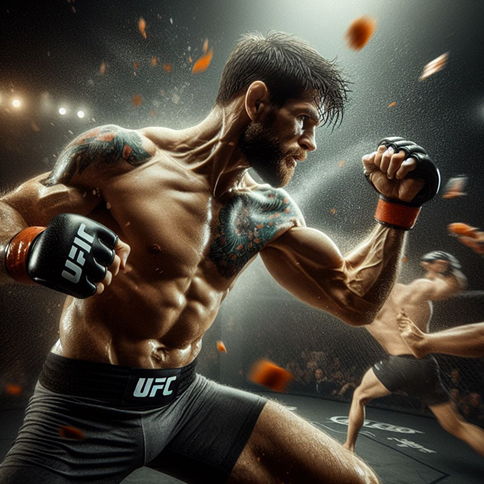
https://pixabay.com/illustrations/ai-generated-kick-boxing-sports-8649914/
Pioneers and Industry Voices
Conor McGregor’s rise from Dublin’s Crumlin club to UFC superstardom showcases the fusion of Irish culture and elite athleticism. His iconic statement “We’re not here to take part, we’re here to take over” became a rallying cry for a new generation of Irish fighters. John Kavanagh, McGregor’s coach and Ireland’s first Brazilian jiu-jitsu black belt, played a key role in professionalizing Irish MMA through SBG Ireland and national governance. He emphasized structured training, international exchanges and steady martial arts progression, raising the technical standard across the country. Fighters like Gunnar Nelson, though Icelandic, trained extensively under Kavanagh and helped establish Ireland as a respected grappling hub.
McGregor’s fighting style blends a wide karate stance with sharp boxing counters and mental warfare, reflecting the creative freedom within Irish MMA culture. His global success paved the way for athletes like Ian Machado Garry and Sinead Kavanagh, who carry forward a mix of technical excellence and cultural pride. Sinead Kavanagh transitioned from national boxing champion to Bellator featherweight contender, bringing crisp technique and relentless determination. Ian Machado Garry, now ranked sixth in the UFC welterweight division, combines evasive striking, cage control and calculated patience, echoing McGregor’s influence while forging his own identity.
Styles and Tactics
Irish fighters mix the skill and technique of Western boxing with the bold and fiery style of Celtic tradition. Their footwork and counterstriking mirror boxing greats like Barry McGuigan and Katie Taylor, while their aggressive posture stems from bare knuckle roots. McGregor’s lead left is a prime example, fast, accurate and psychologically intimidating, often thrown from a wide stance with subtle feints and angle changes to create openings in the opponent’s guard. The emphasis on timing and range control allows Irish fighters to stay just outside of danger before launching sharp counters, refined through both traditional boxing and modern MMA drills. Sinead Kavanagh’s use of crisp jabs and level changes in Bellator shows how boxing fundamentals are adapted into MMA frameworks. Irish strikers also use linear movement and lateral shifts to dictate pace, rooted in both boxing rings and cage dynamics. These features give Irish fighters a unique identity that balances calculated aggression with defensive awareness.
Bataireacht and collar and elbow wrestling shape Irish clinch and takedown strategy. SBG fighters train in jiu jitsu and wrestling, using grips, trips and ground control to complement their stand up. The clinch game involves wrist control, underhook dominance and strategic cage use to wear down opponents and create takedown chances. Fighters like Gunnar Nelson transition from clinch to back control with smooth precision, showing strong grappling integration. Irish fighters often focus on positional control rather than just submissions, favoring mount stability and back retention to win rounds. Ian Machado Garry’s performances reflect this style, using wrestling chains and top pressure to manage tempo and reduce striking risks. This hybrid grappling approach blends traditional Irish combat methods with modern global techniques.
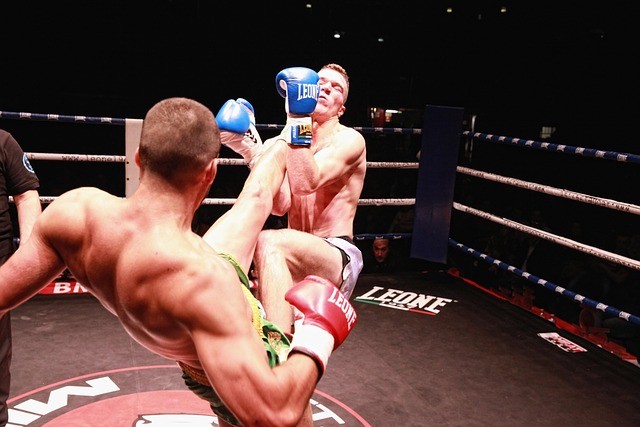
https://pixabay.com/photos/boxing-kick-boxing-wrestling-combat-2206273/
Mental Conditioning
The Irish cultural emphasis on resilience fosters mental toughness. Fighters often mention confidence, grit and recovery after setbacks. Paul Hughes credited McGregor with breaking down mental barriers for younger fighters. Gym culture encourages accountability and shared ambition, reinforcing mental strength. This mindset is built through high intensity sparring, situational drills that simulate adversity and structured goal setting to maintain focus during long training camps.
Coaches like John Kavanagh implement pressure-based sessions where fighters must make decisions under fatigue, developing emotional control and composure. Visualization and mindfulness practices also play a role, with fighters like Ian Machado Garry discussing the impact of sports psychology on peak performance. The result is a new generation of Irish MMA athletes who pair strong technique with the belief they can overcome challenges inside and outside the cage.
Final Thoughts
Irish culture, characterized by resilience, community spirit and a combative heritage, has shaped modern MMA fighting styles and mentality in profound ways. From McGregor’s confident swagger to Kavanagh’s tactical coaching, these cultural roots inform striking precision, grappling strategy and mental fortitude. Key figures like Sinead Kavanagh and Ian Garry demonstrate diversity in technique and ambition. Coupled with cultural infrastructure from traditional fighting arts to modern gym networks, Irish MMA is a global force.
As the scene continues expanding, this blend of age-old spirit and technical sophistication promises to maintain Ireland’s outsized impact in the MMA world. With an increasing number of fighters signing with major promotions like the UFC, Bellator and PFL, the competitive presence of Irish athletes is being reinforced through consistent international performances. Online casino platforms and sports betting sites have also embraced this momentum, offering specialized MMA odds, themed promotions and interactive content that engages fans beyond fight night.
This convergence of digital entertainment and combat sports reflects a broader ecosystem where athletic success fuels economic and media growth. The evolution of Irish MMA now represents not only athletic talent but also strategic coaching, fan-driven engagement and a cultural mindset that continue to elevate Ireland’s legacy in mixed martial arts.


